
Packard Kentucky was an enigma. A ghost-town long extinct, Packard exists only in the surviving memories of a few former inhabitants, a handful of faded snapshots, and but a smattering of arcane references in yellowed periodicals.
Of the numismatic investigations that I have undertaken, chronicling the elusive story of this long-forgotten town was quite formidable. Little but scant documentation remains of this place, and nary but two photographs of Packard were found during the course my research. It took weeks of archive research to locate the photos herein; not a single photograph of Packard existed publicly online until now‡.
Packard began as little more than a mining camp; a hamlet established prior to the dawn of the 20th century. The town sat just 9 miles from the Tennessee border in Whitley County, nestled among the Cumberland Mountains. Named in honor of Mary Amelia Packard, a local schoolteacher, the little town sprouted in a sleepy corner of southeast Kentucky coal country.
From its genesis in the late 19th century until its demise a few years after World War II, the town of Packard hosted three coal companies. By far the largest employer was the Mahan Jellico Coal Company†, with upwards of 200 employees during the height of its operations. Two other coal companies, the Polley Coal Company and later the Booth Blue Gem Coal Company, also conducted mining operations in the area. At the town’s apex, as many as 250 workers were employed by these coal companies.
As with most coal towns, everyday life centered around mining activities, and the companies which provided the locals with their livelihoods. As long as the mines remained open, the “Company” town existed. But when the coal seams inevitably exhausted, so too was the rationale for the towns, and they would inexorably evaporate. This too was the story of Packard.

Estimates vary, but the town had somewhere between 300 and 700 homes, a Baptist Church, a small schoolhouse, a U.S. post-office, a railroad spur, a doctor’s office, and of course, a Company Store.
 During the years of its existence, in many ways the town mirrored typical Americana.
During the years of its existence, in many ways the town mirrored typical Americana.
The townsfolk were proud people and were proud of their town, and shared a strong sense of community with one another.
Townsfolk supported the patriotic causes of the day, and contributed their time and their money like many other American towns.
In a clear example of the town’s patriotism, in 1918 a local union representative published a scathing editorial in a nationwide magazine.
In it he expresses the town’s sentiments, where he resolutely declares the town’s disapproval of Pancho Villa, a Mexican-Revolutionary of the time.
Contrarily, Packard also shared many of the challenges faced by working class Americans.
In many ways though, because Packard was a “Company Town,” the challenges the residents bore were profoundly harsher.

During the early decades of the 20th century, Packard’s miners were active participants in the burgeoning labor and union movements. At various times, its miners participated in walkouts and strikes.

In fact, during the great United Mine Workers Strike of 1922, fear of violence was so widespread, that 25 Kentucky National Guardsmen accompanied by two machine-gun contingents were sent to Packard to keep the peace.
Aside from chronically unsafe working conditions, Packard’s miners were also unhappy that the town possessed but one mercantile, Mahan-Jellico’s ‘Company Store.’
The nearest alternative was over two miles away. Given transportation challenges of the time, the Mahan-Jellico Coal Company took full economic advantage of this isolation by price gouging.

Moreover, like most company stores in coal camps, miners and their families paid for goods using company-issued tokens, or scrip.
Depending on the company and company town, some, if not all, of miner’s wages were paid in coal scrip, rather than U.S. dollars.
This practice, inconceivable today, forced many miners into an existence of forced subjugation and poverty. Without wages paid in U.S. Dollars rather than coal scrip, workers found it nearly impossible to take their families and leave the mines in search for other work.
G. Hamlin, a Packard resident and union representative, expresses the towns frustration with their circumstances.

The town was situated in a hollow, surrounded on all sides by mountains; the nearest transportation hub over 18 miles away. Sanitary conditions for the town’s residents were abysmal, and well water was obtained by a lone pump used to supply potable water to all of its inhabitants.

Fortunately, as with the many coal mining towns scattered throughout the United States, the miners of Packard ultimately became fully unionized, and began to enjoy better working conditions as with the rest of America.
But such accomplishments were short-lived. Less than 30 years later, in 1946, the Mahan-Jellico Coal Company ceased mining operations at Packard.
And with the loss of the mines, the town was abandoned and faded away. The remnants of Packard still exist today, but are located on private property.
All that remains are a few crumbling foundations of the town’s buildings, having long since been razed.
Numismatic Specimens
Pictured below are three token specimens from my cabinet, issued for the town of Packard. These tokens, known as ‘coal scrip’, were issued to employees and their families as means of credit, and for the purchase of goods at Mahan-Jellico’s Company Store.
In order to date these tokens, one must perform a bit of historical legwork.
You will notice that unlike most Hard Times, Merchant, Civil War, and Trade tokens, these tokens have stamped reverses with a patent number and a manufacturer’s name.

Counterfeiting of store-card tokens was quite prolific until the early part of the 20th century. Until that time, all that was required for a counterfeiter to reproduce a token was the mere act of obtaining it. Once obtained, a counterfeiter could send the token to a litany of manufacturers and request to have it reproduced en-masse. Because token manufacturers of the era did cooperate with one another to verify the legitimacy of such requests, all the counterfeiter had to do was ensure they did not send the request to the original manufacturer.
As a means to combat this problem, David E., Edwin H., and Wesley Ingle devised a strategy of patenting token “designs.” Once patented, they could stamp their patent number along with their design on all of the tokens they struck. This simple method virtually guaranteed that the tokens they produced would not be counterfeited. If and when a token manufacturer was asked to duplicate an Ingle token, the manufacturer would refuse out of fear of violating U.S. patent laws. Using this new strategy, the Ingle brothers opened a token-manufacturing business in 1909. Their method became known as the “Ingle System,” and the family business became highly successful.

So successful in fact, that a progression of buy-outs, mergers, and acquisitions ensued. To correctly date these tokens, one must take note of the below timeline:
In the Fall of 1973 the National Script Collectors Association devised a rudimentary template which clarifies striking dates:
Thus, pursuant to the evolution of the token companies above, and the years that Mahan-Jellico was in operation at Packard, these tokens were struck sometime during the following timelines:
$1.00 piece – 1919-1931
5-cent piece – 1934-1941
10-cent piece – 1934-1941

Aaron Packard ![]()
Notes and Sources
† The Mahan Jellico Coal Company later became the Southern Coal and Coke Company³
‡ Approximately 40 hours were spent reviewing online digital collections at Harvard University, University of Michigan, the Library of Congress, Hathi Trust, University of the Cumberland’s, University of Kentucky, Google Books, and various Kentuckian genealogical sites. Not a single photograph of Packard, KY was discovered. Photographic prints were finally located in the paper archives at the Whitley County Historical and Genealogical Society.
- Mary A. Siler, Photographic Archives of Whitley County Kentucky Historical and Genealogical Society
-
Wikipedia, Packard Kentucky
-
Patricia Neal: An Unquiet Life, Stephen Michael Shearer, The University Press of Kentucky, ©2006, pg.4
-
‘Whitley County Kentucky Coal Camps,’ Kentucky Coal Education, Kentucky Foundation, ©1996-2007
-
The Kentucky Anthology: Two Hundred Years of Writing in the Bluegrass State, Wade H. Hall, University Press of Kentucky, ©2005, pg.606
-
Back Talk from Appalachia: Confronting Stereotypes, Katherine Ledford, University Press of Kentucky, ©1999 pgs.219-223
-
United Mine Workers Journal, Volume 28, 1917
-
Elkins Catalog of United States Coal Company Scrip Third Edition Volume I, Bill Williams, Steve Ratliff, NSCA, ©1997, pg.168
-
‘The Ingle System, The Token Corner,’ Coin Slot Magazine, Stephen P. Alpert, August 1981 Issue
-
Scrip, Stuart E. Brown JR, Virginia Book Co, ©1978, pg.55
-
The Library of Congress Digital Archives
- New York’s Crystal Palace & The H.B. West Tokens - November 6, 2019
- Edward Aschermann’s Cigar & Tobacco Tokens - November 2, 2019
- George T. Hussey & His Special Message Tokens - October 30, 2019




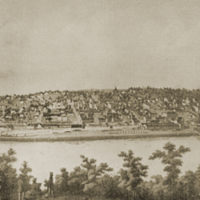
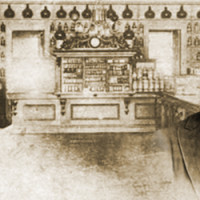
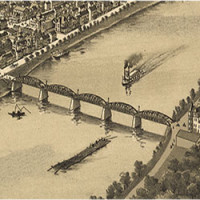
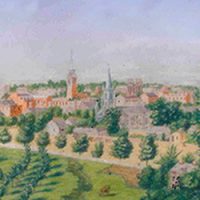
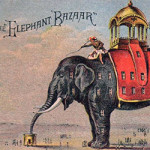
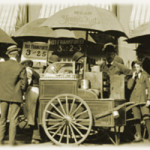
Did you know Patricia Neal was born in Packard, KY
Indeed.
One of the books cited for this article include:
Patricia Neal: An Unquiet Life, Stephen Michael Shearer, The University Press of Kentucky, ©2006, pg.4
My great grandmother used to babysit Patricia Neal. My grandmother and Ms. Neal used to take naps together and play together while my great grandmother took care of them. In fact, Patricia’s dad was the doctor that delivered my grandmother.
My Grandparents lived near there and Grandfather was killed in a mine when a piece of slate fell on him. This was about 1927 to 1932 or around that time . His name was William Cody Parks . I’m trying to find out where he is buried If you have any information of cemeteries close by you can e-mail me at asphaultjunky@gmail.com Thank you
Hi Janice –
I do not have any information as to the whereabouts of William Cody Parks.
Have you tried the Whitley County Historical and Genealogical Society? They have two books that have cemetery listings, as well as two funeral home books. Their website is: http://www.wchgs.org/index.php/top-books-for-sale
Good luck.
Aaron Packard
My mom was born in Packard. My great grandparents was from there
My great grandfather was a well digger. His name was Jim Lawson
Hi Toni –
Thanks for sharing your family’s history with Packard Kentucky. It has been quite difficult to find photos of the town of Packard. As you can likely tell, I was only able to find two photos of the town. If you have any photos of Packard, and would like to share, please feel free to write back. If indeed you would like to share, I’d be happy to credit you and your family for the photographs, in the article.
Thanks again,
Aaron Packard
I’m related to both lawson and the parks bunch they are actually cousins. Raleigh Lawson johns and margrets son. Married Martha parks. Which in turn Raleigh killed my great great gpa and then turned around and married Martha in 1939. Up until then Raleigh blew his brains out in his car in the 70’s george parks actually had multiple wives due to the mother’s dying during child birth his brother John parks. George is my 3rd great gpa. The parks had there on cemetery in rockcastle Kentucky as well as the lawsons. They are all in Kentucky anything else is a lie if its in another state. And fyi none of the parks, lawsons, or waddle are of Cherokee decent they actually are of European back ground prodominatly german, scottish and Irish decent.
How did Sid Peavley “Two gun Sid” get into this picture?
Magistrate and Treasurer Sid Peavley is not mentioned in this article.
I very much enjoyed you article on Packard. I have found that in the 1930 and 1940 census my grandfather, William A (Andrew) Johnson and family, lived in Packard (on Apple Tree St. in 1930) and his occupation was listed as “store manager commissary” both years His income for 1939, listed in the 1940 census, was $1800. He was the U S Postmaster for Packard from 22 July 1938 until 1 February 1944 when he and his wife moved to Knoxville.
Hi Marilyn –
Thanks for the kind words. I’m glad that you found the article enjoyable.
I appreciate you sharing information about your grandfather. Given your grandfather’s profession, it’s most probable that he transacted with the coal scrip featured in this article.
If you have any photos of your grandfather at his store, or any photographs of Packard, would you be interested in sharing them here? Many folks come here in search of information about Packard, and perhaps they may find them helpful. Just a thought…
Thanks again,
Aaron Packard
Your grandfather dug our well up in the head of powers haller back in 67 or 68. He brought his well digging truck and went down 240feet before he hit water. At about 120 feet he hit gas and continued until he hit water. He dit for what gas he needed to get the job done. He was a wonderful man who did all he could to help anyone who needed help. Your grandma was just as caring as was your grandfather.
Hello, My ancestors are from Whitley County and surrounding areas. I remember many stories told during my childhood. Some of the last names of my family are Petrey and Walker. My great grandfather was a Walker who had 11 children by his first wife, my great grandmother, and 11 more by his second wife. The youngest child by his first wife past away last year. She was 95 and had lived longer than any of her siblings and parents. Your article is very interesting. It has made me want to research more about my family history.
Hi Jena,
I read the article on Packard, Kentucky because I am researching some family history for a client. You mentioned the surname of Petrey. I just happen to be researching the family of Adam Petrey for my clients. Small world, huh?!
Hi, great article, it’s the only info I could find in regards to a token I found with Booth Blue Gem Coal company Packard Ky on one side & good for 5 cents in merchandise on the other. I haven’t found an image or other info anywhere of what I’ve found, other than this article. Any ideas for research or reference?
Hi Kyle –
Thanks for the enquiry. The Edkins Catalogue of U.S. Coal Company Scrip, 3rd Edition, Vol 1, lists two denominations for the Booth Blue Gem Coal Company: a 10-cents and 50-cents piece, both at Rarity Rating R-10 (only 1-4 known extant). Edkins does not list a 5-cent piece. Thus I must assume that your specimen is also as rare as the 10-cent and 50-cent pieces. If you could email me photos of your specimen (front and back) it would be most appreciated.
Thanks, kindly
Aaron Packard
Aaron,
Have you been able to find any additional information or images of the 5 cent scrip that I found? Did you receive the images that were emailed many months ago? I am really struggling to find any information at all about the company and it’s practices. Thanks
Aaron,
Images were mailed to the support@nuva….. email address. If you run across any additional info, please let me know. I’m learning as I go with the tokens and now scrip that I have found. Are there images of the 10 & 50 cent scrips that you mentioned?
Thanks for the info and link.
Kyle
CC , great article as usual , every time I say I’m collecting way too many things , I keep coming back to these company script pieces . Such an important part of our history and still reasonably priced . Just a question , does this Packard fit into your families history ? Keep up the good work .
I have additional pictures of Packard that I would like to add to this website, how do I add the photos?
Could you send me some of the pics you have of Packard I would really love to have a copy
My grandmother used to live there. She has told me stories my while lfe about Packard. She still talks about it to this day. I would love to get a copy of pictures you have. Please let me know how to contact you directly so I can give you my email or address. Thank you
My grandfather, James Setser, worked in the mines and lived with his family (wife, three sons, and one daughter) in Packard. Growing up, my grandmother told me lots of stories. My father, Vernie Setser, lived there as a boy and told stories about riding rail road cars and killing snakes. Eventually, my grandmother moved the children to Covington, got a job and paid off their debt to the company so that my grandfather could join his family in Covington.
My Father was born there is there any thing left of the town ? I would love to see where it was and have a coin from there my father died when I was a kid and I am trying to piece together something of his past to get to know him . Can any one help . with pics a coin and anything they know. Thanks
I was born & raised in Whitley County, KY.
My father (born in 1931), often told me stories about playing in the creeks at Packard with a pretty girl that grew up to be a movie star.
When my father grew up and married he named his first child, a girl born in 1953 “Patricia Ann” because he never forgot that pretty girl from Packard aka Patricia Neal.
When I grew up I decided to learn all I could about Packard, my genealogy & Patricia Neal’s genealogy only to find out that Patricia is actually my blood relation as she’s my cousin through the Siler ancestry here in Whitley County, KY.
I know exactly where Packard is, I have photos of what the place looks like now but there is nothing still left there that would indicate there was ever a town or that anyone had ever lived there.
My favorite photo of Packard has two houses still standing, it states in the photo description: “The Neal’s lived in the distant house; these are the only two houses still standing in the once busy Packard so the house still standing is the house my grandmother & father lived in when my Dad was just a young boy.
I would be happy to share this photo and all I have with others who are also interetsted in learning about Packard, KY.
Hi Denise –
thanks very much for your post and information. I appreciate.
I would indeed be very nice to see your photos and share them in the article. Please feel free to email me. My email address can be found in the ‘Contact’ section of this site.
Thanks, kindly
Aaron Packard
I would be interested in seeing your pics and any other information you have concerning the Packard mining company in the Shelley Family particularly a Thomas Ledford Shelley Annaruth Keating Shelley
I have a small connection to Packard as my father in law was raised in Packard. Crawford was the family name. I visited Packard with him in 2010 and there is nothing left of the town. I do have a collection of Mahan-Jellico scrip. I have 1 each of 1 cent, 5 cent, 10 cent, 25 cent and $1 scrip.
My question is what does the stamped “M” signify? Was that placed after it was used or was that there during manufacturing?
When stamped with a letter or other symbol, most Coal Scrip emissions were stamped at the time of manufacture. The stamps were used so that both the scrip users and the proprietors could easily distinguish scrip from one camp to another. This is because often times coal companies operated more than one camp in a geographical area. Having said that, the ‘M’ on the Packard pieces most likely signified “Mahan,” as Mahan-Jellico was the operator of the Packard camp.
Great article! I’ve been to Packard twice, about ten years ago. If my memory serves me correctly, there were only 3 houses left. My grandparents (John Leonard and Issa Pearl Walker and daughter Mildred) lived in Packard sometime between 1912 and 1919. Have you ever heard anything about Walkers living in Packard?
Hi Bret –
I have not heard anything about the Walkers living in Packard.
Thanks for your post!
driving up to our family farm Packard shows up on the GPS. we are on the other side of the mountain. The Walker “holler” is at the bridge where Buck creek crosses the road. My father said Frank Walker lived in the house. Frank was about my great grandfather’s age. My father is 84
you said most of Packard is on private property now. do you know if they allow people to see it?
From what I understand, the land is off limits by the private owner.
I worked in Packard for Gatliff Coal Co. in the 80’s. It was a surface mine operation.
Please post any additional photos that are sent to you. We need to preserve the memories of these “Ghost Towns” Thank you for your efforts.
Hi Carol –
The photos of Packard, KY are quite elusive. The two which I’ve posted on the site are the only two that I was able to obtain.
I will continue to keep my eyes peeled for more.
Kind regards,
A. Packard
I have some pics of the Packard mining camp in Whitley Country Kentucky
Hi Tom –
I would be very much interested in seeing those photos.
Would you be willing to send them over email?
Thanks!
A.M. Packard
My Dad was born in Packard, John Harp, May 14, 1916. He told me he knew Patricia Neal